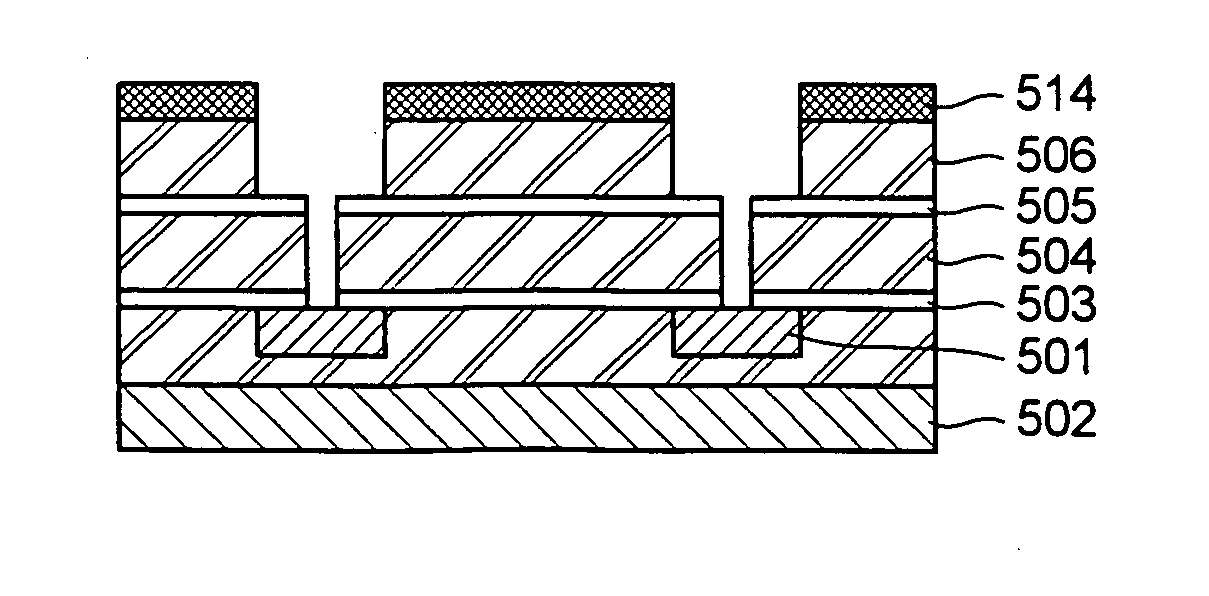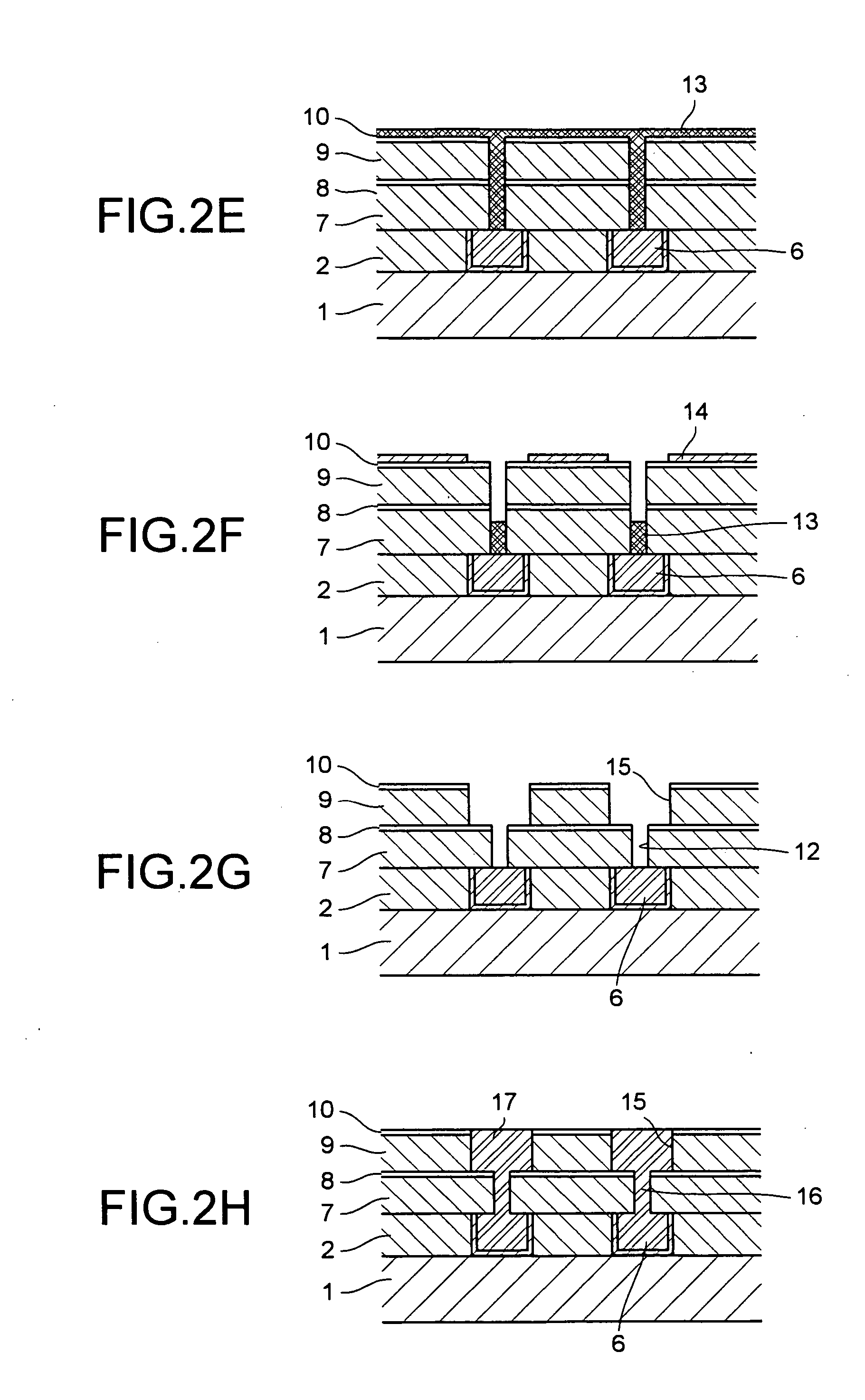Undercoating material for wiring, embedded material, and wiring formation method
a technology of embedded materials and wiring, which is applied in the direction of photosensitive materials, photo-taking processes, instruments, etc., can solve the problems of deterioration of the pattern resolution of the resist, increased dielectric constant, and easy deterioration of the surface of the resist, so as to prevent deterioration of the resist pattern, reduce the damage to the substrate, and easy to remove
- Summary
- Abstract
- Description
- Claims
- Application Information
AI Technical Summary
Benefits of technology
Problems solved by technology
Method used
Image
Examples
examples 1 to 4
The following resin compositions (A), (B), (C), and (D) were prepared as the undercoating materials.
(A) A resin composition with a solid content adjusted to 6 wt %, produced by dissolving a resin component consisting of ethyl p-styrenesulfonate in a solvent consisting of γ-butyrolactone / ethyl lactate (2:8).
(B) A resin composition with a solid content adjusted to 6 wt %, produced by dissolving a resin component consisting of ethyl p-styrenesulfonate:hydroxyethyl acrylate (5:5), and Cymel 1172 (tetramethylol glycoluril by Mitsui Cyanamid Corporation) in an amount of 20 wt % based on the resin component, in a solvent consisting of ethyl lactate.
(C) A resin composition with a solid content adjusted to 6 wt %, produced by dissolving a resin component consisting of ethyl p-styrenesulfonate / 9-hydroxyanthracenyl acrylate (5:5), in a solvent consisting of γ-butyrolactone / ethyl lactate (2:8).
(D) A resin composition with a solid content adjusted to 6 wt %, produced by dissolving a res...
example 5
The resin composition (C) was additionally blended with an optical acid-generating agent TPS-109 (Midori Kagaku Corporation) in an amount of 3 wt % based on the resin component to prepare a new resin composition (C2). A wiring structure was formed in the same manner as in Example 1 except that the resin composition (C2) was used. As a result, a wiring structure having a rectangular pattern excellent in dimensional regulation was obtained.
examples 6 to 9
The following resin compositions (A), (B), (C), and (D) were prepared as the undercoating materials.
(A) A resin composition with a solid content adjusted to 6 wt %, produced by dissolving a resin component consisting of ethyl p-styrenesulfonate in a solvent consisting of γ-butyrolactone / ethyl lactate (2:8).
(B) A resin composition with a solid content adjusted to 6 wt %, produced by dissolving a resin component consisting of ethyl p-styrenesulfonate:hydroxyethyl acrylate (5:5), and Cymel 1172 (tetramethylol glycoluril by Mitsui Cyanamid Corporation) in an amount of 20 wt % based on the resin component, in a solvent consisting of ethyl lactate.
(C) A resin composition with a solid content adjusted to 6 wt %, produced by dissolving a resin component consisting of ethyl p-styrenesulfonate:9-hydroxyanthracenyl acrylate (5:5), in a solvent consisting of γ-butyrolactone / ethyl lactate (2:8).
(D) A resin composition with a solid content adjusted to 6 wt %, produced by dissolving a res...
PUM
| Property | Measurement | Unit |
|---|---|---|
| Temperature | aaaaa | aaaaa |
| Time | aaaaa | aaaaa |
| Dielectric polarization enthalpy | aaaaa | aaaaa |
Abstract
Description
Claims
Application Information
 Login to View More
Login to View More - R&D
- Intellectual Property
- Life Sciences
- Materials
- Tech Scout
- Unparalleled Data Quality
- Higher Quality Content
- 60% Fewer Hallucinations
Browse by: Latest US Patents, China's latest patents, Technical Efficacy Thesaurus, Application Domain, Technology Topic, Popular Technical Reports.
© 2025 PatSnap. All rights reserved.Legal|Privacy policy|Modern Slavery Act Transparency Statement|Sitemap|About US| Contact US: help@patsnap.com



